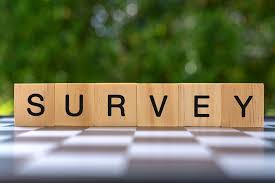Older adults can save tens of thousands of dollars annually by choosing assisted living communities over aging in place in their homes.
Unlike point solutions, Inspiren unifies resident safety, care planning, staffing, and emergency response into a single AI-powered platform.
An artificial intelligence-powered virtual assistant platform for senior living and care providers.

 You know the experience. You walk into the lobby of a medical practice, and the sign tells you to sign in at the kiosk. You drop your license in the slot – but the software is having a down day, and so a person emerges from behind the glass to debug it. Meanwhile another person checks you in. So their time savings from the device evaporate. The irritation of the patients trying to sign in grows – one announces how much he hates technology.
You know the experience. You walk into the lobby of a medical practice, and the sign tells you to sign in at the kiosk. You drop your license in the slot – but the software is having a down day, and so a person emerges from behind the glass to debug it. Meanwhile another person checks you in. So their time savings from the device evaporate. The irritation of the patients trying to sign in grows – one announces how much he hates technology. The AI infrastructure juggernaut is on – consumers hesitate and deployment is cautious. Parallel tracks are emerging. Investment by the
The AI infrastructure juggernaut is on – consumers hesitate and deployment is cautious. Parallel tracks are emerging. Investment by the  Baby boomer aging – it’s a big tech opportunity. Today there are
Baby boomer aging – it’s a big tech opportunity. Today there are  It’s a pretty good tech universe if you know what you’re doing... Maybe you’re someone who reads all the
It’s a pretty good tech universe if you know what you’re doing... Maybe you’re someone who reads all the  We are selling a product that people don’t want to buy. This Senior Housing News article,
We are selling a product that people don’t want to buy. This Senior Housing News article,  Clearly many caregivers are missing out on useful technology. According to the new
Clearly many caregivers are missing out on useful technology. According to the new  The University of Michigan polled older adult responders – and the results are in. In a recent survey of more than 1000 adults aged 50+, the University of Michigan poll, fielded inside Michigan and nationwide, demonstrates that Artificial Intelligence technology is useful to older adults – and that they are not intimidated by it. As with other studies, those with less education had somewhat less trust in AI-enabled information, and those with health disabilities also were somewhat less trusting of the information they found. (Source: July, 2025
The University of Michigan polled older adult responders – and the results are in. In a recent survey of more than 1000 adults aged 50+, the University of Michigan poll, fielded inside Michigan and nationwide, demonstrates that Artificial Intelligence technology is useful to older adults – and that they are not intimidated by it. As with other studies, those with less education had somewhat less trust in AI-enabled information, and those with health disabilities also were somewhat less trusting of the information they found. (Source: July, 2025  This report is published every five years – and it is (still) dismaying. The new report,
This report is published every five years – and it is (still) dismaying. The new report,